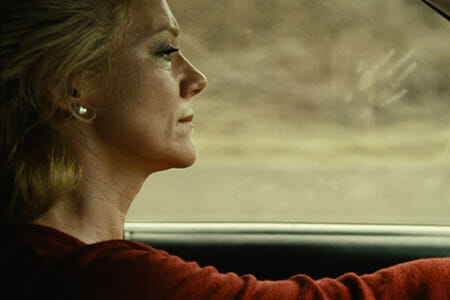
Release Date: Aug. 21
Director: Lucrecia Martel
Writer: Lucrecia Martel
Starring: María Onetto, Claudia Cantero, Inés Efron, Daniel Genoud
Cinematographer: Bárbara Álvarez
Studio/Run Time: Strand Releasing, 87 mins.
The story of a figuratively, mysteriously decapitated driver
I didn’t realize at first how closely I was supposed to be watching The Headless Woman, the third film by Lucrecia Martel. Boys are playing near a dusty road with their dog; somewhere else, women are chatting after a luncheon and corralling their kids into cars; then one of those women is driving along the largely deserted, rural road seen earlier. She’s alone. She reaches for her cell phone. She runs over something large. After coming to a stop, she stares at the interior of her car as if she’s afraid to consult the rearview mirror, as if she’s trying to swallow an incriminating document. It sticks in the throat. Are the little handprints on the window new, or have they been there all along? I wasn’t paying enough attention to know. She puts on sunglasses—is that a bump on her forehead? As she drives away, Martel gives us the first backward gaze at the road. It’s a dog, lying across the road and receding into the horizon. But was the dog alone?
From there, the woman seems to drift through life with an odd blend of detachment and concern. She moves almost silently through her day as if dazed, like someone in a foreign country who nods and smiles to hide the fact that she doesn’t speak the language. In her case, it’s not the language that she lacks but the very details of her life. Who is she, and who are these people? What happened? Although she lacks energy, the people around her, familiar with her routine, unfamiliar with her accident, compel her forward.
This 87-minute film ends with very little explanation, but the difference between seeing it as a frustrating shaggy dog tale and a subtle and compact short story depends entirely on how actively you’re watching. Martel stages unsettling moments like a flash of buzzing light from around a dark corner in the restroom, whose mundane explanation walks nonchalantly into the frame seconds later to put our minds at ease. An old woman on her death bed talks about hearing the sound of dead people in the room as we hear what seems to be nails scraping against metal, a noise explained momentarily as a child in the indistinct background playing with a toy car. The dazed woman stands in line at the supermarket, and Martel shoots her perspective with a focus so shallow that only the child two places ahead of her is sharply in view, cushioned by the blurry objects in front of and beyond her. Martel weaves themes of light and dark, blond and black, sharp and blurry, rich and poor into a visual fugue.
It’s hard to say precisely what Martel is thinking about the woman or her situation, but like any good abstract work, it seems to function in many different ways—perhaps politically or psychologically—and it affirms that the hovering hands and the exquisitely layered sound design of her previous film, The Holy Girl, weren’t accidents but the unusually precise creations of an exciting new filmmaker. Across these three films, she’s not simply finding her voice but already singing with an amazing level of control.